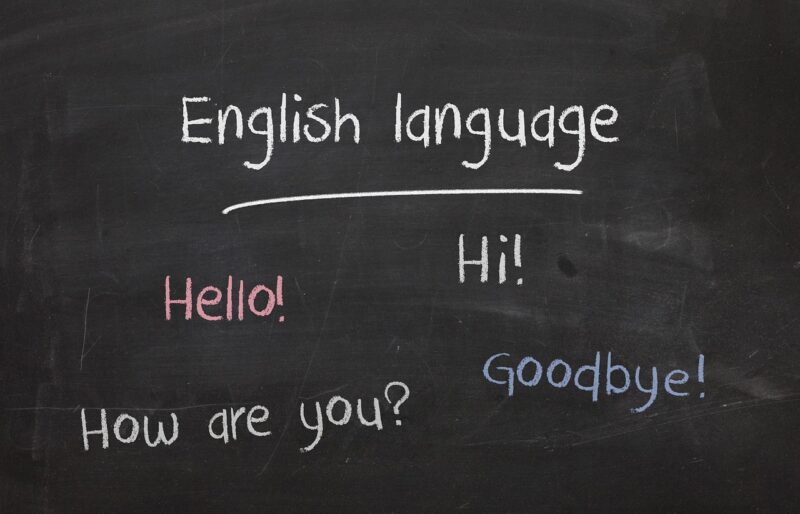How Language Shaped Homo sapiens and Our Ability to Share Knowledge
November 14, 2024

Language is one of humanity’s most remarkable achievements, setting us apart from other species and driving our development as a culture. From the early hominids using simple sounds to communicate, to today’s complex languages with vast vocabularies, language has played a vital role in the evolution of Homo sapiens. In this article, we will explore how language has shaped human evolution, facilitated the sharing of knowledge, and influenced societies throughout history.
1. The Evolution of Language and Homo Sapiens
The origins of language are deeply intertwined with the evolution of Homo sapiens. Evidence suggests that our ancestors began developing linguistic abilities about 200,000 to 300,000 years ago. The ability to communicate through structured language allowed early humans to gain a competitive advantage.
Key aspects of how language evolved include:
- Biological Changes: Physical adaptations, such as the development of the vocal cords, the shaped skull, and the brain’s increased size were essential for articulate speech. These changes made producing a broader range of sounds possible, which is crucial for complex language.
- Social Interaction: As social animals, early humans needed to collaborate for hunting and gathering. Language allowed them to share ideas, coordinate efforts, and strengthen social bonds, which were vital for community survival and cohesion.
- Symbolism and Abstract Thinking: The capacity for abstract thought is necessary for language. As humans developed complex ideas, they needed a system to express them, evolving language as a symbolic tool for discussing not just the physical world but abstract concepts like time, morality, and spirituality.
These factors combined paved the way for language to flourish, establishing an integral aspect of human communication that differs from the more instinctual signals used by other species.
2. Language as a Tool for Knowledge Sharing
Language has been fundamental in creating and disseminating knowledge throughout human history. Here’s how it operates as a vehicle for education and cultural transmission:
- Oral Traditions: Before writing systems emerged, knowledge was passed down orally from generation to generation. Stories, myths, and teachings were encoded in language, allowing cultural practices and survival techniques to persist over time.
- Written Language: The invention of writing around 3500 BCE marked a significant step in preserving knowledge. It enabled humans to document events, scientific findings, and philosophical thoughts, leading to the rise of complex civilizations and facilitating more sophisticated communication.
- Digital Communication: In the modern era, technology has further transformed the way knowledge is shared. Digital language platforms, social media, and online learning resources allow for instantaneous sharing of information across the globe, breaking down traditional barriers in education and knowledge dissemination.
Language thus serves as a bridge connecting generations, enabling the growth of societies and the refinement of human knowledge.
3. The Impact of Language on Culture and Society
Language has profound implications on culture and societal structure. It influences everything from social norms and identity to how communities engage with one another. Consider the following examples:
- Cultural Identity: Language is a key component of cultural identity. Languages carry the history, values, and traditions of a people, helping to foster community cohesion and continuity. Loss of language often equates to a loss of cultural identity.
- Social Hierarchy: Language can also be a tool of power and control. Different dialects or languages signify social status, shaping dynamics and fostering divisions within societies. Additionally, language forms can be tied to access to education and resources.
- Influence on Thought:** The Sapir-Whorf Hypothesis suggests that language shapes thought processes. The way people conceive of and interact with the world is influenced by the structure and vocabulary of the languages they speak, ultimately affecting cultural perspectives and worldviews.
Through these mechanisms, language becomes not just a means of communication but a significant factor in the very fabric of society.
4. Language and Cognitive Development
The development of language is crucial for cognitive growth. Children learn languages instinctively, which aids in their overall development. Here’s how language contributes:
- Critical Thinking: Language acquisition enhances cognitive skills. Understanding and using language promotes logical thinking, problem-solving, and the ability to conceptualize internal thoughts and external realities.
- Social Skills: Language plays an essential role in developing interpersonal skills. Through conversation, children learn about emotions, empathy, and relationships, forming the basis for effective communication in adulthood.
- Memory and Learning: The ability to use and understand language directly impacts memory retention and learning processes. Language acts as a tool for classification and organization, making it easier to store and recall information later.
Overall, language nurtures cognitive functions that are essential for successful interaction with the world.
5. Challenges and the Future of Language
While language has evolved, it faces unique challenges today:
- Language Endangerment: Many languages worldwide are at risk of extinction. Modernization, globalization, and dominance of certain languages lead to a decline in linguistic diversity. Losing a language means losing its culture and knowledge base.
- Digital Language Evolution: The internet is creating new languages, slang, and dialects. While this innovation fosters creativity, it also challenges traditional language norms and shifts in meaning.
- Cross-Cultural Communication: As societies become more interconnected, effective cross-cultural communication is crucial. Misunderstandings can arise from different languages, dialects, and cultural contexts, necessitating greater emphasis on language education and cultural sensitivity.
Moving forward, addressing these challenges requires a commitment to preserving linguistic diversity and promoting multilingualism, ensuring that knowledge sharing remains alive and meaningful.
Conclusion
Language is the cornerstone of Homo sapiens’ evolution, enabling us to communicate, share knowledge, and build complex societies. As we navigate an ever-changing world, it remains a powerful tool that not only reflects our past but actively shapes our future. Understanding language’s impact enhances our appreciation for its role in our lives today, emphasizing the importance of preserving linguistic diversity for generations to come. By fostering an environment that values language and communication, we can ensure that humanity’s most significant collective knowledge continues to thrive.
If you’re fascinated by how language has shaped the human experience, explore more about its implications in our rapidly evolving world and its influence on our understanding of each other.








